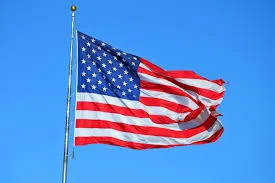On Sunday, Donald Trump urged an immediate ceasefire between Ukraine and Russia following his meeting with Ukrainian President Volodymyr Zelenskyy in Paris. In a Truth Social post, Trump emphasized the need to end the conflict, reiterating his long-standing pledge to bring peace to the region. However, his specific plans to achieve this goal remain unclear.
Trump wrote, “Zelensky and Ukraine would like to make a deal and stop the madness.” He called for immediate negotiations to follow the ceasefire. Recently, Trump appointed Keith Kellogg as a special envoy for the conflict, signaling a renewed focus on resolving the war. Kellogg’s earlier proposal included a ceasefire, security guarantees, and delaying Ukraine’s NATO membership. Trump’s transition team has not confirmed if his proposal aligns fully with Kellogg’s plan.
Trump Urges Action from Global Leaders
Trump also highlighted the urgency of action in his post. “I know Vladimir well. This is his time to act. China can help. The world is waiting!” he stated, referring to Russian President Vladimir Putin. Trump claimed to have spoken with Putin last month, though Russia denies the conversation occurred.
In the same post, Trump drew parallels to the Syrian conflict, suggesting that Russia had shifted focus away from defending President Bashar al-Assad due to its preoccupation with Ukraine.
During a pre-recorded interview on Meet the Press, Trump expressed his intention to end the war, albeit vaguely. He suggested that U.S. military aid to Ukraine could decrease under his leadership. Additionally, Trump called on NATO countries to fulfill their financial commitments, reaffirming his support for the alliance if these obligations are met.
Zelenskyy and Kremlin Respond
Ukrainian President Zelenskyy reacted cautiously to Trump’s ceasefire call. He emphasized that any peace deal must include robust guarantees to prevent future violations. “It cannot simply end with a piece of paper and a few signatures,” Zelenskyy wrote on X (formerly Twitter). He reiterated that Ukraine seeks peace but remains wary of Russia’s history of disregarding agreements.
Zelenskyy highlighted the need for security measures that ensure the ceasefire’s reliability and address ongoing occupation. He stated that a hasty agreement could lead to further suffering if not enforced properly.
Meanwhile, Kremlin spokesperson Dmitry Peskov expressed Russia’s willingness to engage in talks, contingent on terms outlined in Istanbul agreements from 2022. Peskov noted that any negotiations must also account for the current battlefield situation.
Kellogg’s Proposed Peace Plan
Although Trump has not detailed his proposed ceasefire, Keith Kellogg’s earlier peace plan offers insights into the administration’s possible approach. Kellogg suggested that Ukraine should continue receiving weapons during negotiations to deter further Russian advances. His plan also involves delaying Ukraine’s NATO membership by 10 to 25 years to entice Russia to negotiate.
Kellogg emphasized that any deal must guarantee Ukraine’s security and prevent Russia from retaining seized territory. He has worked on this plan for months, though it remains unclear how much of it Trump endorses. Kellogg’s appointment, however, indicates broad alignment with Trump’s vision for resolving the conflict.
The Role of NATO and the Path Ahead
A source familiar with ongoing discussions stated that Ukraine would not be forced into any agreement it opposes. However, Ukraine’s willingness to engage in negotiations may influence future U.S. military aid. The source also noted that delaying NATO membership for Ukraine is a potential compromise to encourage a settlement.
While the specifics of Kellogg’s plan continue to evolve, it highlights a structured approach to achieving peace. Whether Trump will fully adopt this strategy remains to be seen, but his emphasis on immediate action signals a focus on resolving the conflict during his presidency.
As the war continues, Trump’s proposals and Kellogg’s framework offer a potential roadmap for diplomatic efforts. However, achieving a lasting resolution will require significant cooperation among all parties involved.
